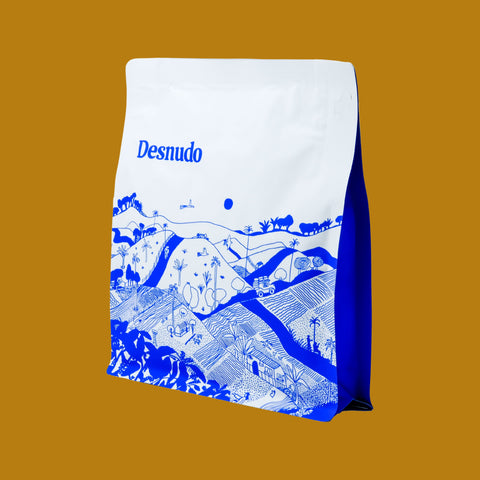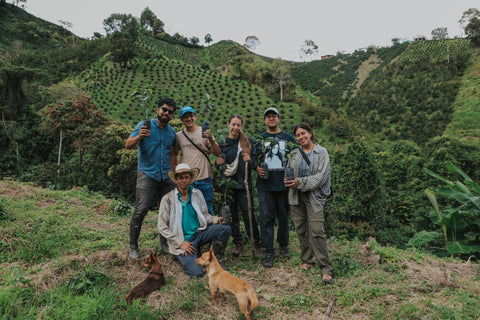



Desnudo Espresso | Community Lot #29 | Traditionalist | Washed | Dry Fruits, Lime, Dark Chocolate🍫
The varieties: Colombia, Castillo y Caturra
This communal lot is mainly composed of three varieties, which are the most commonly grown in the region and throughout Colombia: (i) Castillo, known for its pronounced acidity and good body; (ii) Colombia; and (iii) Caturra, both offering sweet and fruity notes.
The producers
Santa María, Huila, is a truly special region. Nestled in the majestic Central Cordillera, its steep mountains create a breathtaking landscape, while the Baché River winds through the town like a living current, breathing life into the land.
The diverse microclimates formed by these mountains allow for coffee production throughout different times of the year. Its volcanic soils, combined with the perfect balance of cool and temperate climates, give rise to exceptional coffees — dense, fruity, and complex, each cup telling its own story.
But beyond its natural gifts, what truly sets Santa María apart is its people. Here, coffee farmers carry innovation in their hearts. With relentless curiosity, they experiment with fermentation processes, cultivate exotic varieties, and dedicate themselves to perfecting every detail. Their commitment and passion are the soul of this region, blessed for the production of specialty coffees.
Every sip of Santa María’s coffee is a celebration of dedication, knowledge, and a deep love for the land. Here, coffee isn’t just grown — it’s lived. ☕
the process
This coffee was processed as a washed coffee with a short fermentation and dried in a Solar beds. This process results in balanced flavors of chocolate, nuts, and orange, common notes in the region's coffees.
Desnudo coffee is the best I've tasted so far. We happened upon it when visiting Austin and now order it so we are not without!
Amazing to have at home when I can’t make it to one of their locations !
Desnudo Espresso | New Colombia Variety - Lot # 23 | Traditionalist | Washed | Caramel, Orange, Grapes 🍇
AMAZING COFFEE, just wish the bag was a little bigger, moving foward will definitely be getting 2 bags at a time!
Very pleasant tasting brew. Very smooth and pleasing. Not a fan of fruit notes, but still pleasant to drink.

